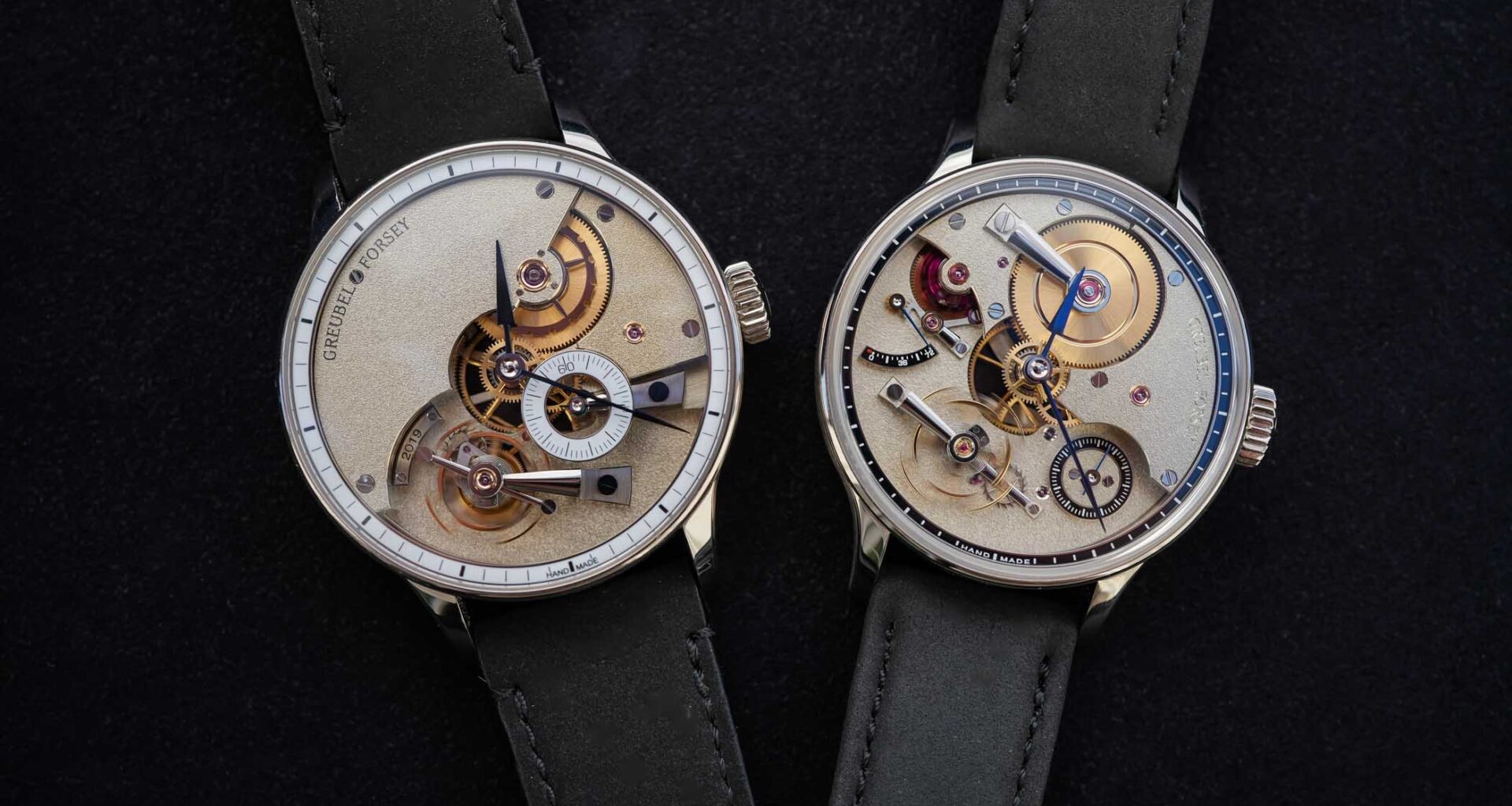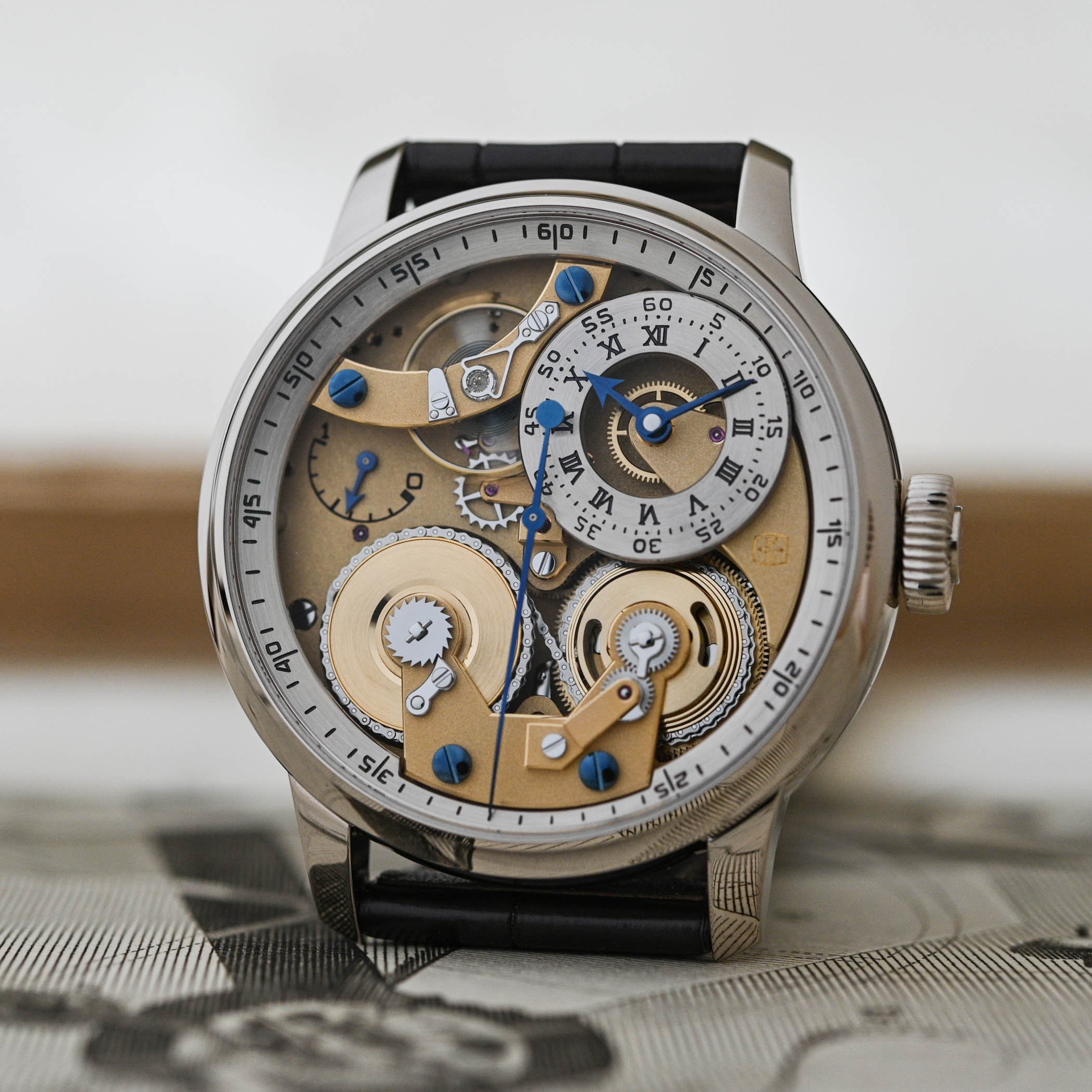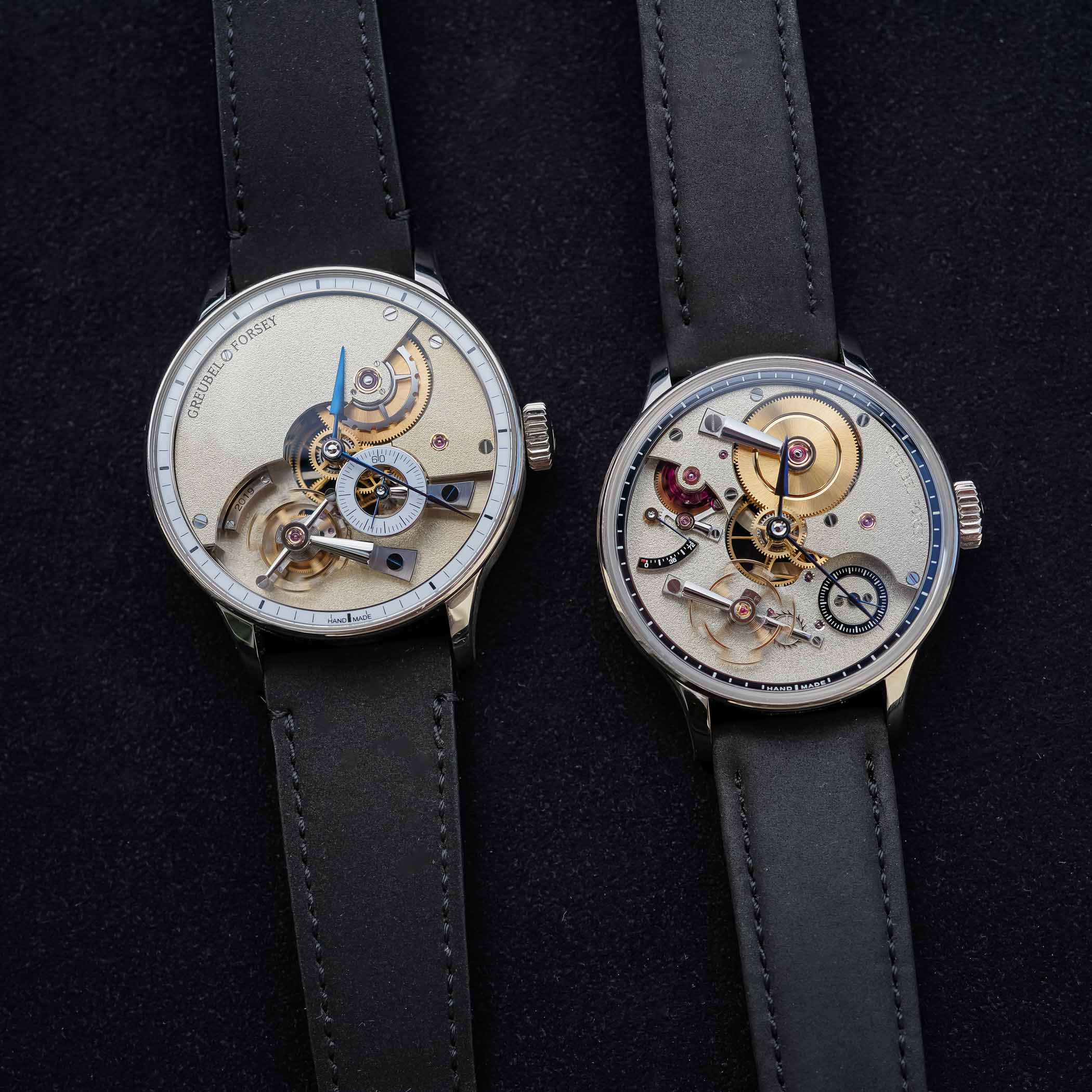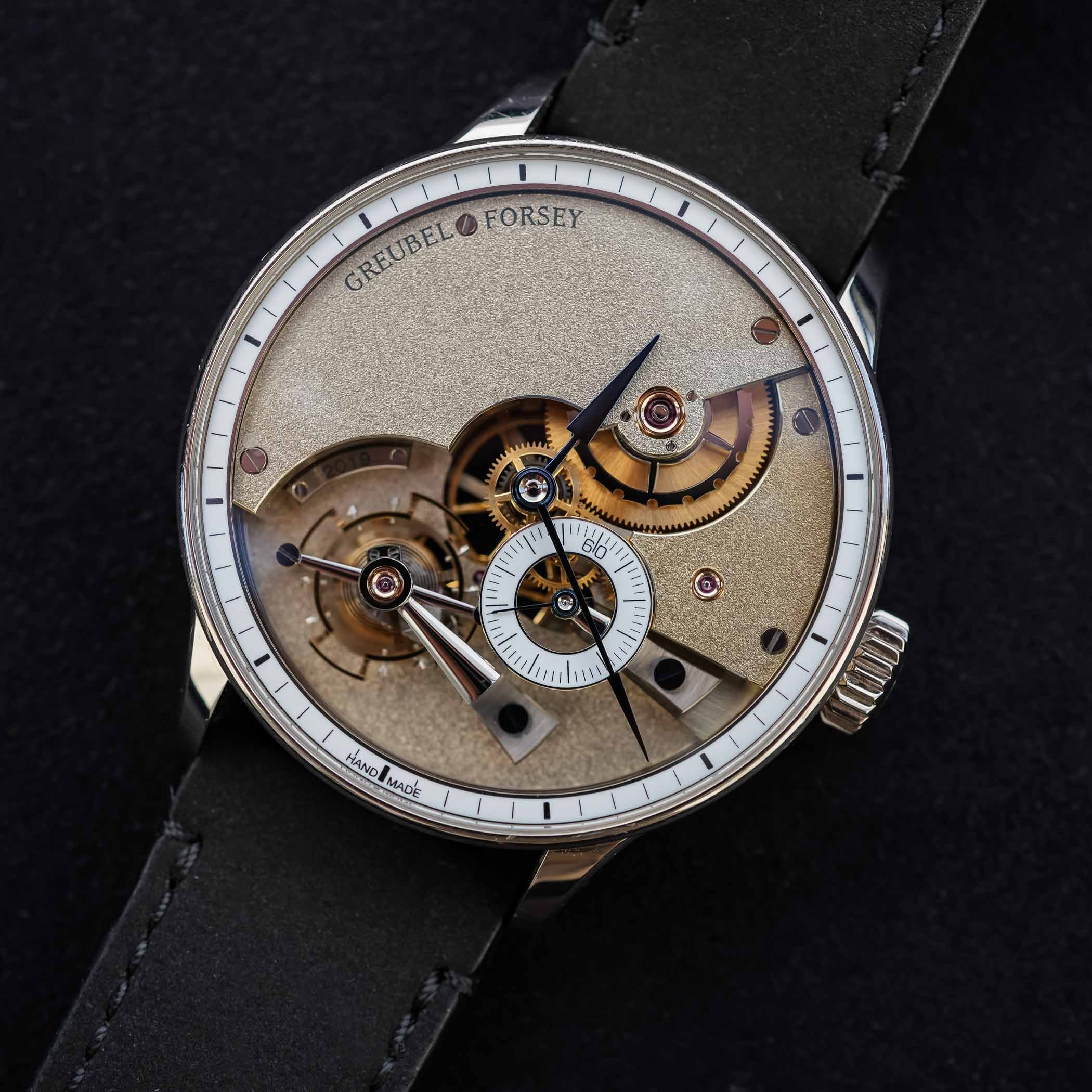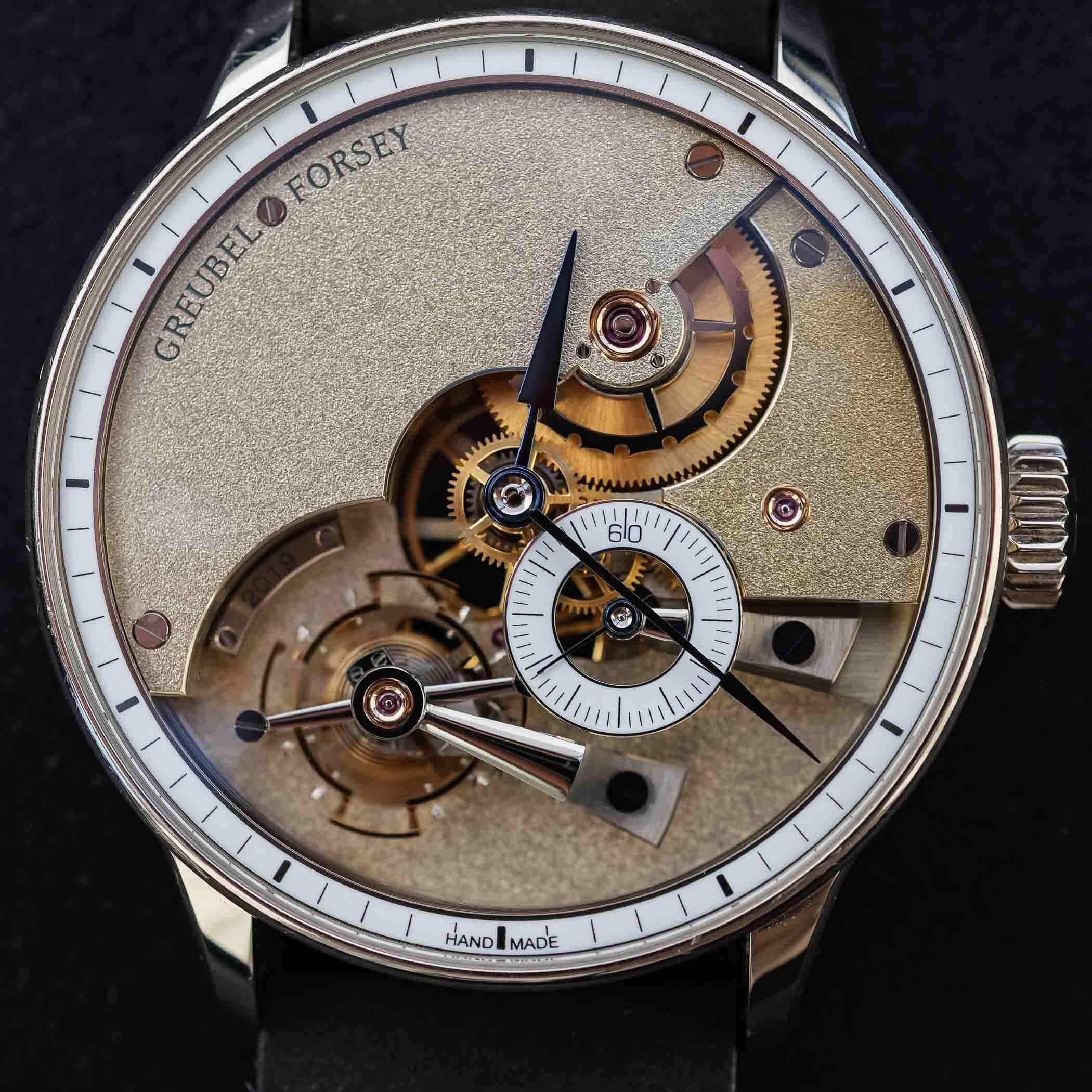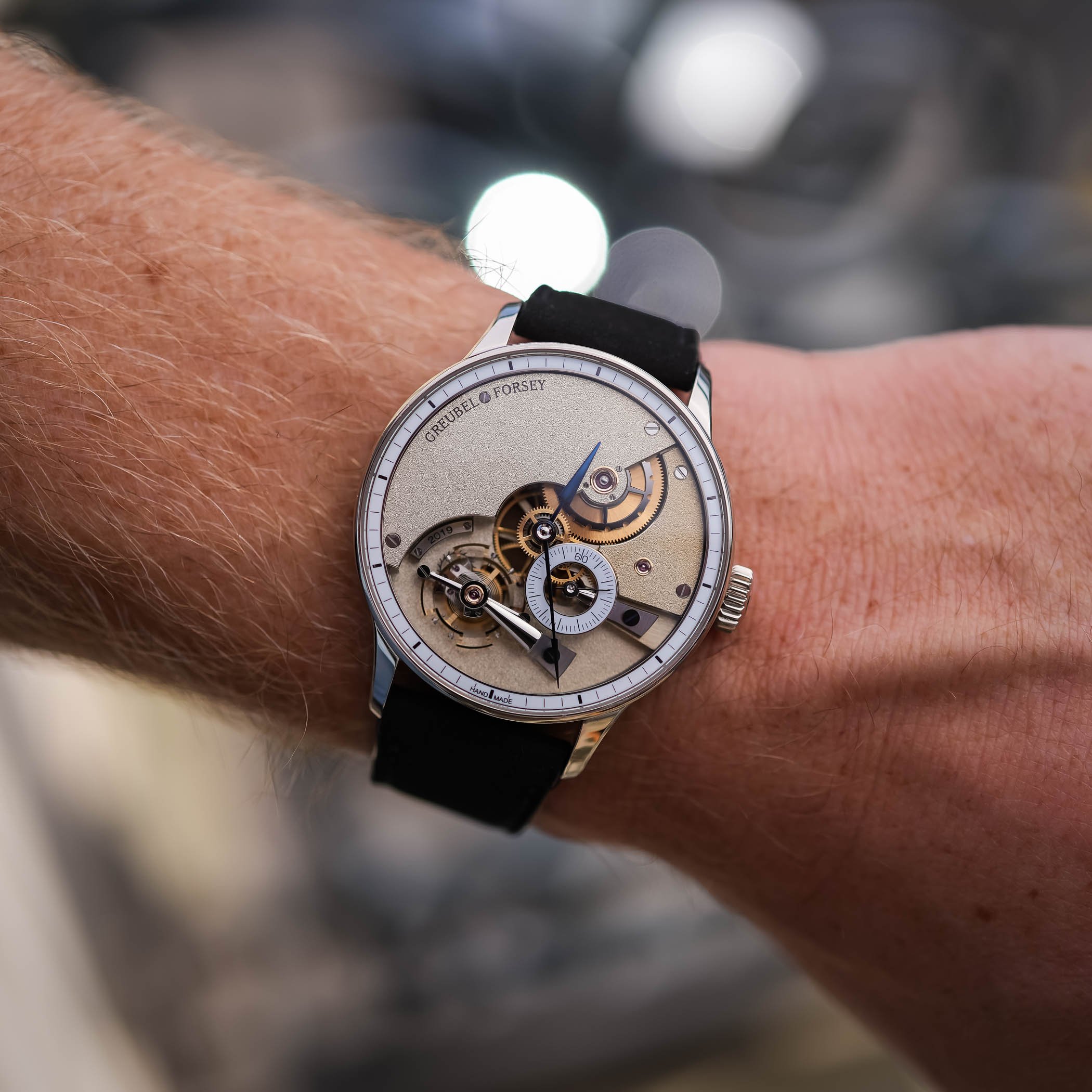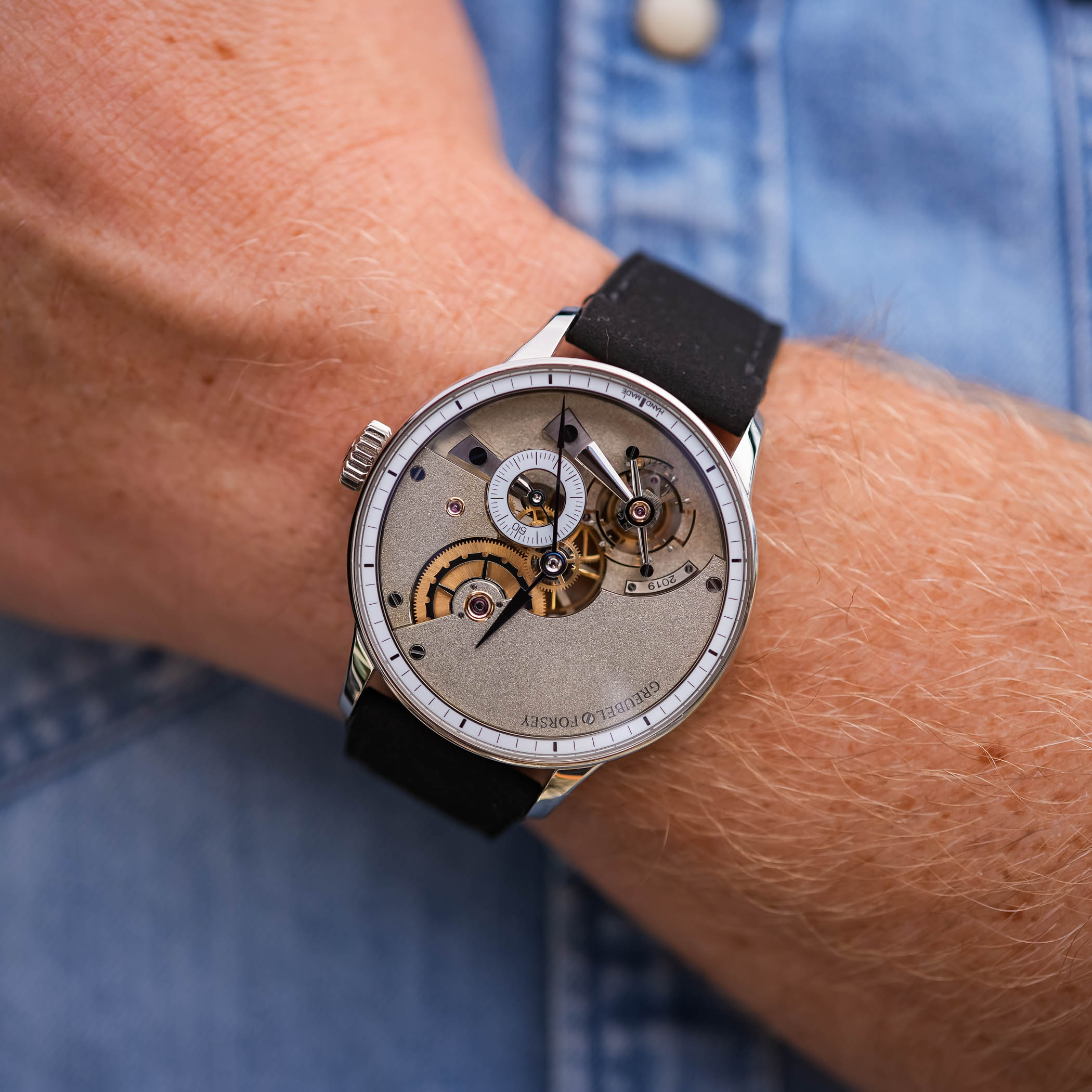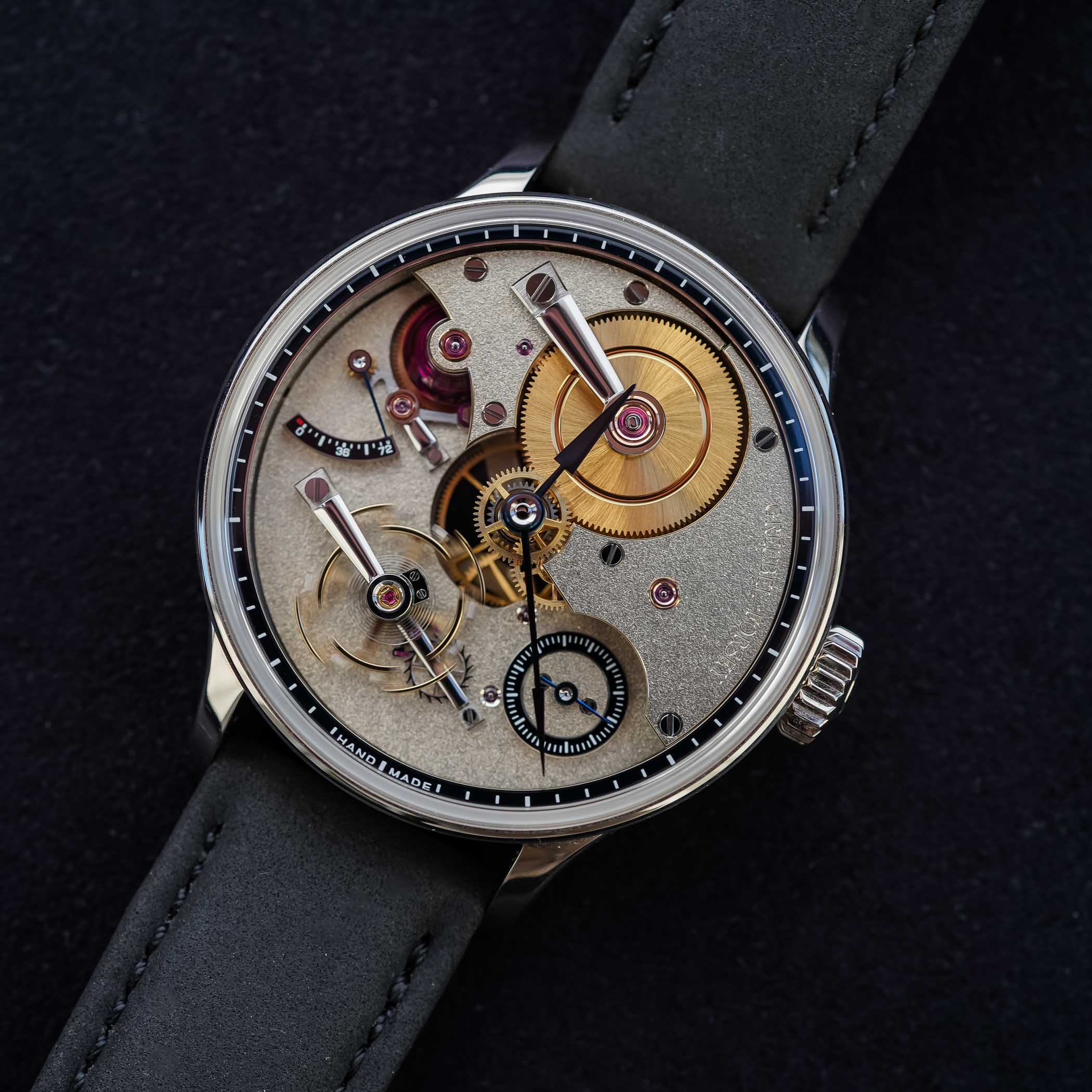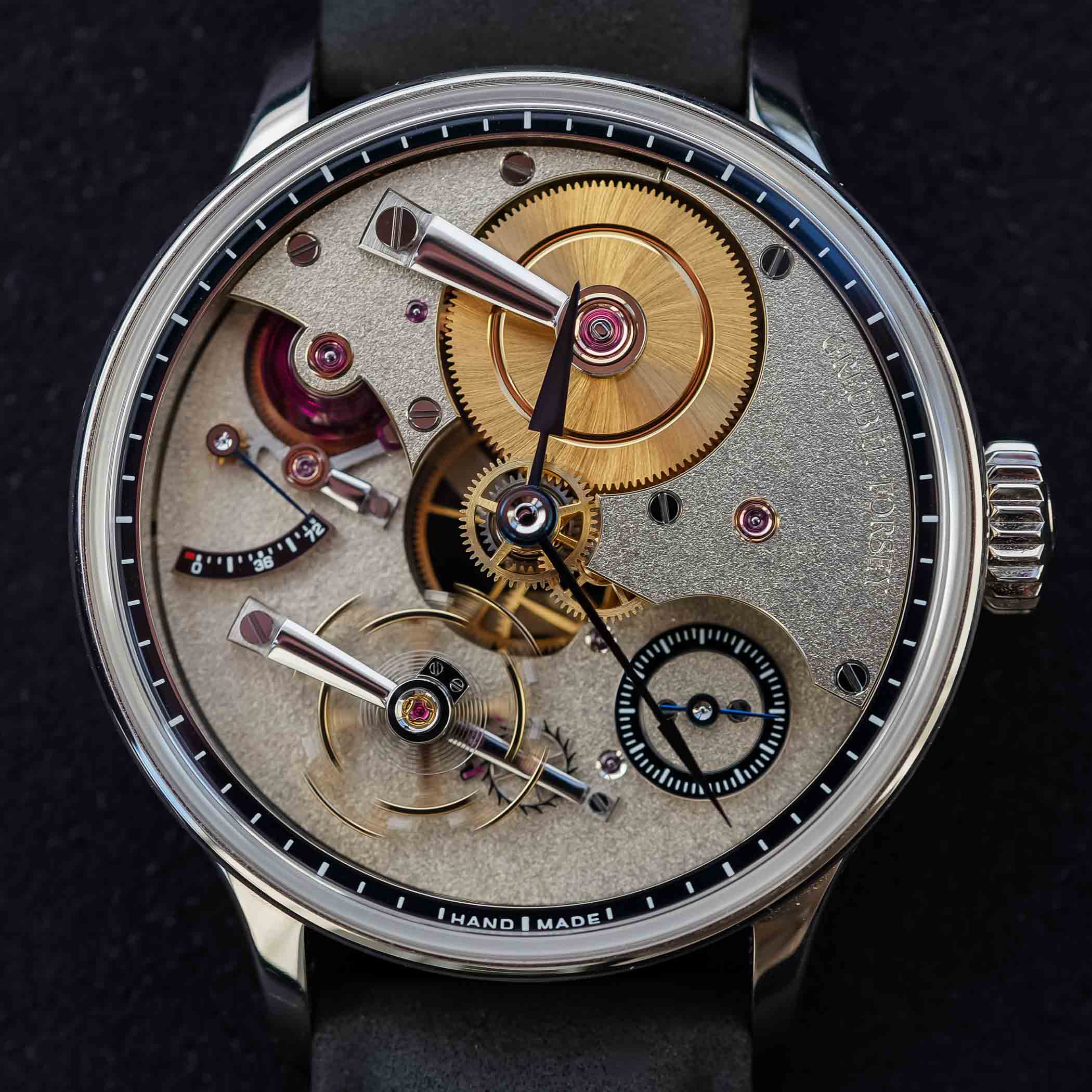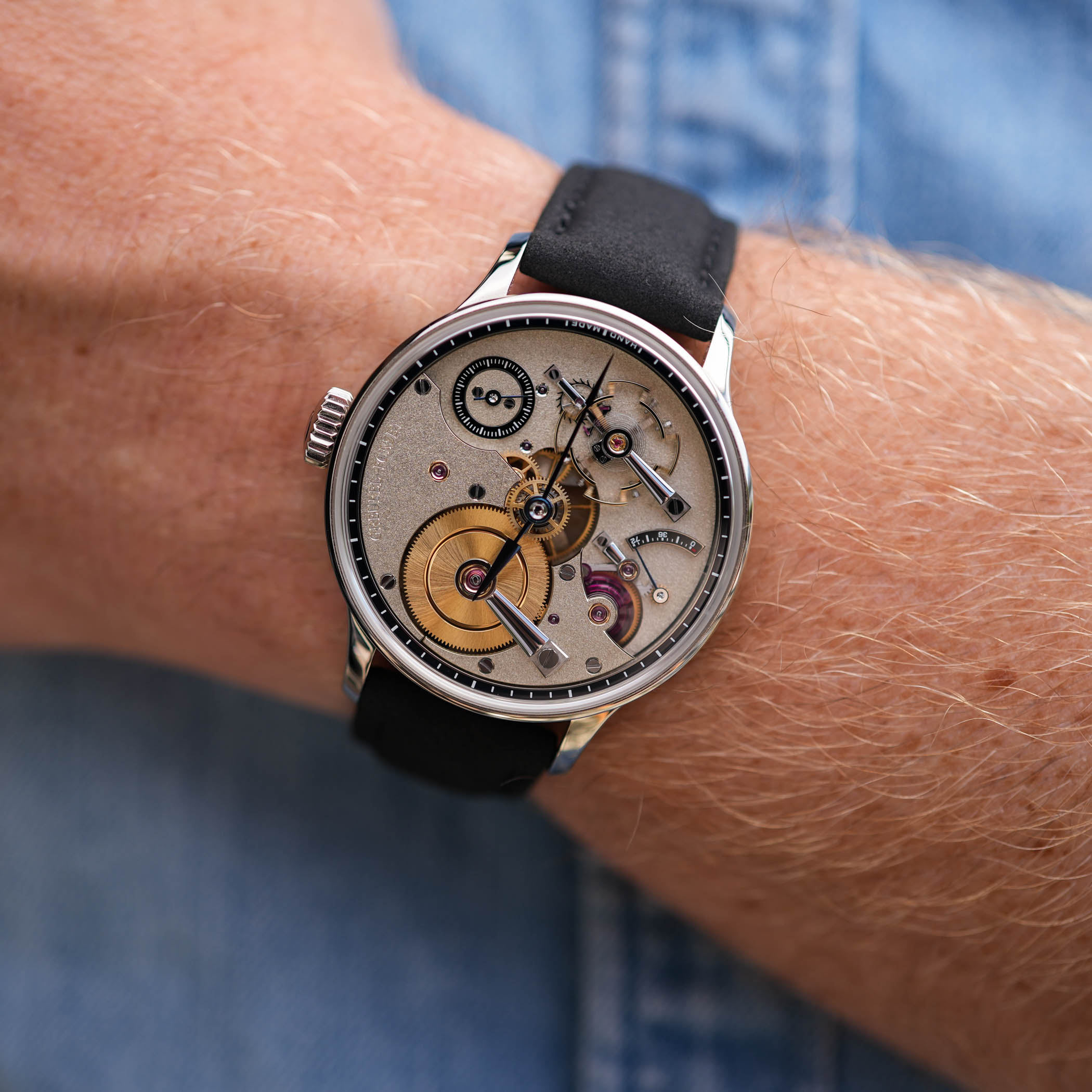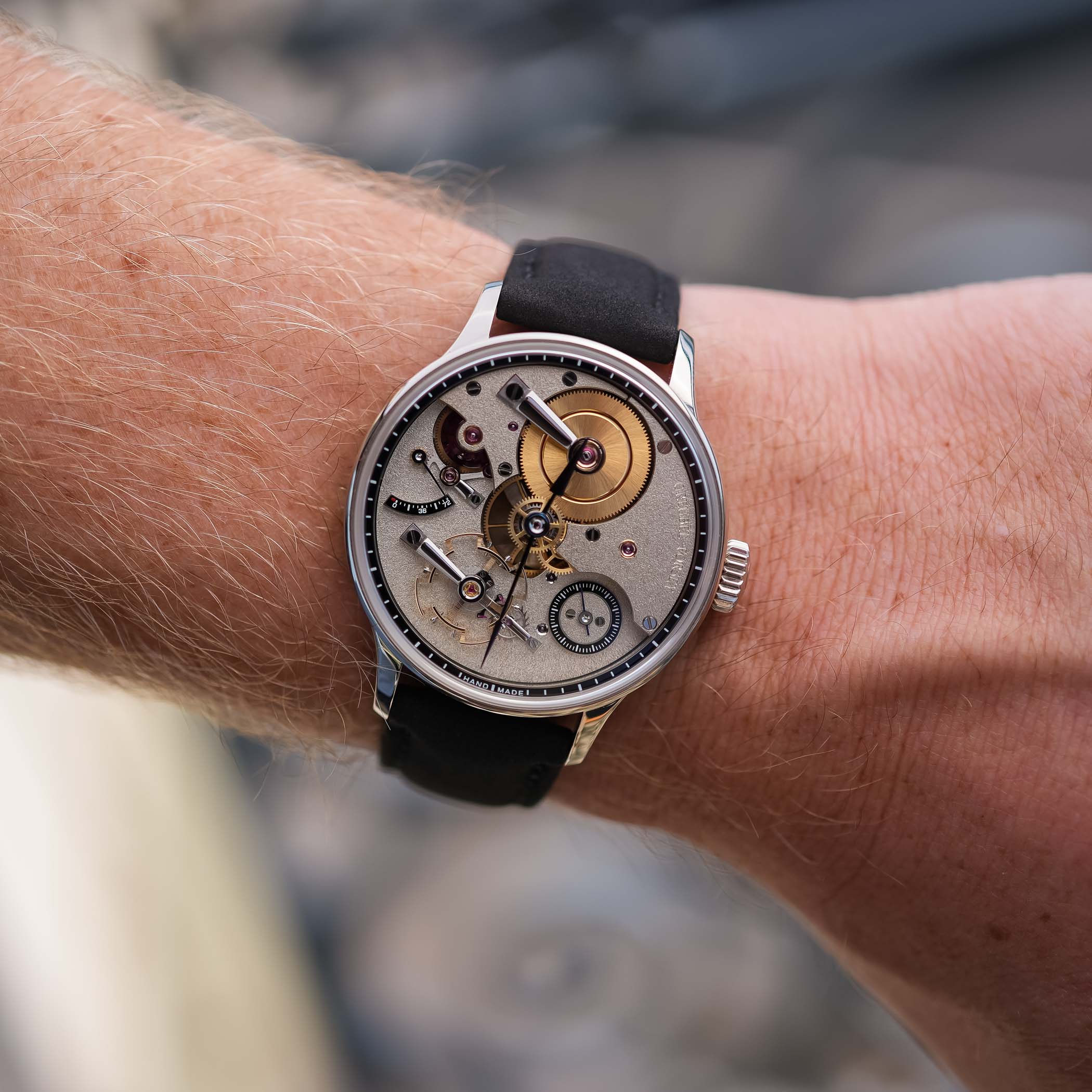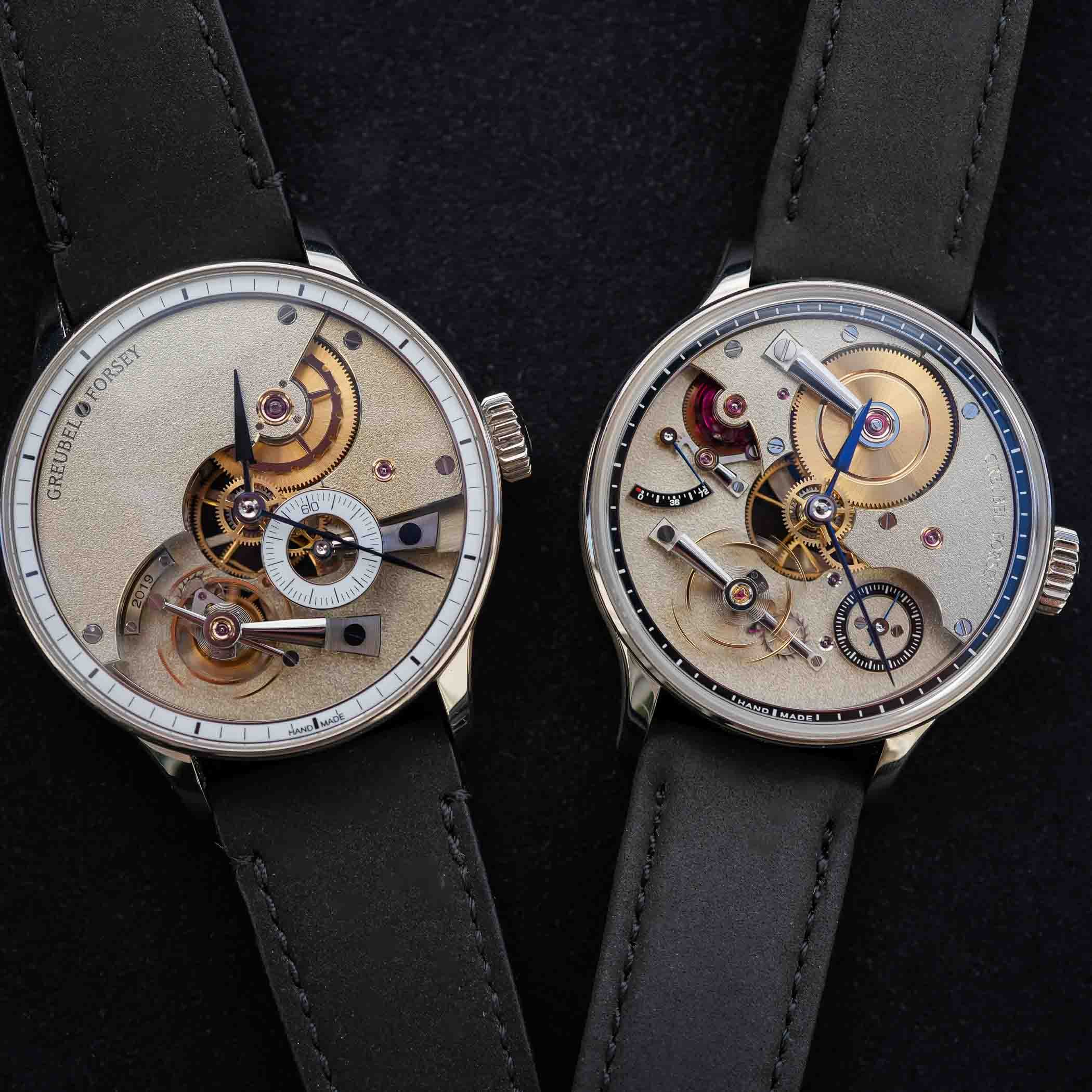It’s not every day that you have the opportunity to see two of the most exquisite watches of recent years reunited together… Considering the impressive price and rarity of these two timepieces, we felt it was a necessity to simply bring them together in the pages of this magazine, with no other objective than pure horological pleasure. Without further ado, let’s dive into the intricacies of the splendid Greubel Forsey Hand Made 1 & Hand Made 2.
Background
In 2005, Robert Greubel, Stephen Forsey (founders of Greubel Forsey), and Philippe Dufour created the Time Æon Foundation to safeguard traditional watchmaking skills threatened by growing industrialisation. The goal was to ensure that artisanal knowledge, techniques once central to horology, could be practised, transmitted and preserved. The foundation’s first major project, Naissance d’une Montre 1, began in 2009 with French watchmaking teacher Michel Boulanger. Under the guidance of Dufour, Greubel and Forsey, he produced the Montre École, a tourbillon watch crafted almost entirely by hand. Presented in 2012 and sold at Christie’s in 2016 for nearly USD 1.5 million, it demonstrated both the technical viability and cultural relevance of such an approach.
A second project, Naissance d’une Montre 2, followed with watchmakers Dominique Buser and Cyrano Devanthey. Their handmade watch featured an inverted movement with constant-force regulation and a distinctive four-armed balance, once again proving that hand methods could yield modern, innovative results.
In 2025, the Naissance d’une Montre 3, developed by Ferdinand Berthoud and built without CNC machines, incorporated a fusée-and-chain transmission, a thermo-compensated split balance, and required more than 11,000 hours of manual work by 80 craftsmen.
It is within this ongoing framework that Greubel Forsey introduced the Hand Made 1 (2019) and Hand Made 2 (2025). These watches are not isolated achievements, but a direct continuation of the mission to prove that in the 21st century, a watch built almost entirely by hand can still define the very highest level of haute horlogerie. We had an opportunity to experience them side by side. Here are our impressions.
The Greubel Forsey Hand Made 1
The Greubel Forsey Hand Made 1 looks, at first glance, almost classical, with enamelled chapter rings and flame-blued hands. A 43.5mm simple case in 18k white gold, 13.5mm thick, gives it a quiet, traditional silhouette. However, behind this restraint lies one of the most ambitious projects in contemporary watchmaking: a watch that is 95% handcrafted, using only traditional tools, yet finished and adjusted to the tolerances of a modern Greubel Forsey. From conception to completion, each piece requires approximately 6,000 hours of work, equivalent to three years of man-hours, and only two or three can be produced each year.
Every visible element of the watch tells the story of human effort. The tourbillon at six o’clock, its carriage composed of 69 components weighing just 0.52 grams, is cut, corrected, and assembled without the aid of modern technology. The balance wheel is shaped on a jig borer to maintain precision despite the imperfections inherent in manual work, and the balance spring is hand-rolled, flattened, coiled, and adjusted, a process now almost extinct in watchmaking. The 308 components that make up the movement are the survivors of more than 800 fabricated parts, each part having been subjected to rigorous selection. Only the sapphire crystals, case gaskets, spring bars, jewels, and mainspring are not handmade.
The smallest details demand the greatest labour. A single screw can require up to twelve separate operations and eight hours to finish, and the watch contains 83 of them in 24 variations. The wheels, manually cut and bevelled, have sharp interior angles painstakingly polished by hand; one wheel alone takes 600 times longer to make than an industrial equivalent. The escape wheel, cut tooth by tooth, has twenty teeth, each with four polished faces, a microscopic sculpture of symmetry and light. Even the barrel bridge, scalloped by hand on a jig borer, requires operations that are effortless for machines but exhausting for hands. The barrel carries a Maltese cross stop-work, black-polished and chamfered, both functional and ornamental.
Decoration takes the watch into another realm. Bridges in German silver gleam with mirror-polished anglage, their sharp inner and outer corners shaped entirely with files and burnishers. The tourbillon cock, first milled on a pantograph, is rounded, chamfered, and brought to a deep black polish through hours of patient work. Unique to the Hand Made 1 is the gratté finish on the baseplate, a pattern of shimmering brushstrokes inspired by the scraping marks on vintage machine beds. Achieved by alternating flat polishing with abrasive paste and manual scraping, it takes 70 to 80 hours to complete a single plate, making it the most time-consuming part of the watch.
The Greubel Forsey Hand Made 1 may appear straightforward, yet it is impossibly complex in execution, and what it represents is priceless. It´s proof that in the hands of dedicated craftsmen, the human touch can still achieve perfection, one imperceptible cut, polish, and correction at a time.
Quick Facts: 43.5mm x 13.5mm – 18k white gold case, polished – sapphire crystal – 30m water-resistant – hours, minutes, seconds and one-minute tourbillon – calibre Hand Made 1, in-house – manual winding – 21,600vph – 60h power reserve – Haute Horlogerie hand-finishings – calfskin strap with white gold pin buckle – 2 to 3 pieces produced annually – approx. CHF 800,000
The Greubel Forsey Hand Made 2
The Hand Made 2 continues the radical philosophy Greubel Forsey first set out with the Hand Made 1, but channels it into a watch of more restrained proportions and subtler expression. At 40.9mm in diameter and 12.8mm thick, it is smaller and more intimate on the wrist. Instead of a tourbillon, it presents the essentials: hours, minutes, small seconds, and a power reserve. Yet simplicity here does not mean ease. Suppose the Hand Made 1 was a monument to mechanical bravura. In that case, the Hand Made 2 is a masterclass in refinement, with 96% of its 270 components fabricated entirely by hand and every detail carrying the unmistakable weight of human craft.
Like its predecessor, almost everything is handmade: wheels are cut tooth by tooth, screws are individually turned and polished through a dozen steps, and even the balance spring is rolled, coiled, and adjusted by hand, a task so rarely attempted today that only a handful of workshops in the world still possess the skill. A conical jewel, serving the power reserve mechanism, is cut and shaped by hand as well, a small flourish that elevates a functional component into something precious. Only the sapphires, case gaskets, spring bars, jewels, and mainspring are exceptions, just as in the Hand Made 1.
The aesthetic, however, is its own. The Hand Made 2 greets the eye with a composition of frosted German silver bridges, warm and matte, punctuated by Grand Feu enamel sub-dials for the time and the power reserve. The dials glow with a subtle depth only enamel can provide, their glossy surfaces contrasting with the fine frosting of the metal. Blued steel hands sweep over the displays, while ruby-red jewels set in gold chatons, golden wheels, and black-polished steel screws provide points of colour that shimmer against the restrained backdrop. Everything is visible, but not theatrical. Where the Hand Made 1 puts its tourbillon forward as a kinetic sculpture, the Hand Made 2 arranges its gear train and barrels into a quiet architectural harmony.
The finishing vocabulary is vast and exacting. Bridges are bordered with broad, hand-polished anglage, their surfaces frosted and their countersinks mirror-bright. The cocks are rounded, filed, and polished by hand, and the wheels are chamfered to sharp interior angles that light up under magnification. Even the smallest steel parts carry black polish so deep they reflect like pools of ink. The result is coherent from every angle, front or back, with no surface left untouched.
Despite its artisanal genesis, the Hand Made 2, like the Hand Made 1, is a fully resolved modern watch. Its manually wound movement beats at 21,600 vibrations/hour and offers a 72-hour power reserve (the Hand Made 1 provided 60 hours), with every piece fabricated, finished, assembled, and adjusted by the same small team of craftsmen. Each watch requires around 5,000 hours of work, slightly less than the Hand Made 1, but still equivalent to years of human effort. Production remains just as limited: no more than two or three can be made in a year.
Quick Facts: 40.9mm x 12.8mm – 18k white gold case, polished – sapphire crystal – 30m water-resistant – hours, minutes, seconds and power reserve – calibre Hand Made 2, in-house – manual winding – 21,600vph – 72h power reserve – Haute Horlogerie hand-finishings – calfskin strap with white gold pin buckle – 2 to 3 pieces produced annually – CHF 620,000 (excl. taxes)
Thoughts
Together, the Hand Made 1 and Hand Made 2 are kindred spirits, both built on the same radical idea of rejecting automation in favour of the human hand, and both reaching levels of precision and beauty that rival or surpass machine-made perfection. Yet they are also distinct. The Hand Made 1 is grand and demonstrative, its tourbillon the centrepiece of a technical statement, while the Hand Made 2 is quieter, more classical, revealing its artistry in enamel dials, frosted bridges, architectural balance and exposed components. One speaks in bold strokes, the other in subtle tones, but both say the same truth: perfection, even in today’s age of industrial mastery, can still be achieved by hand.
For more, visit greubelforsey.com.
https://monochrome-watches.com/greubel-forsey-hand-made-1-and-hand-made-2-reunited-comparative-review/

